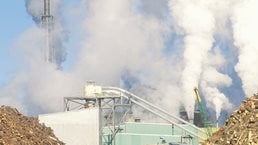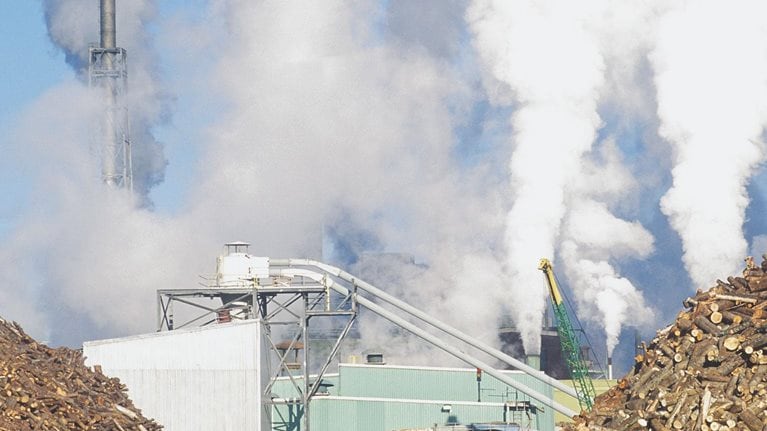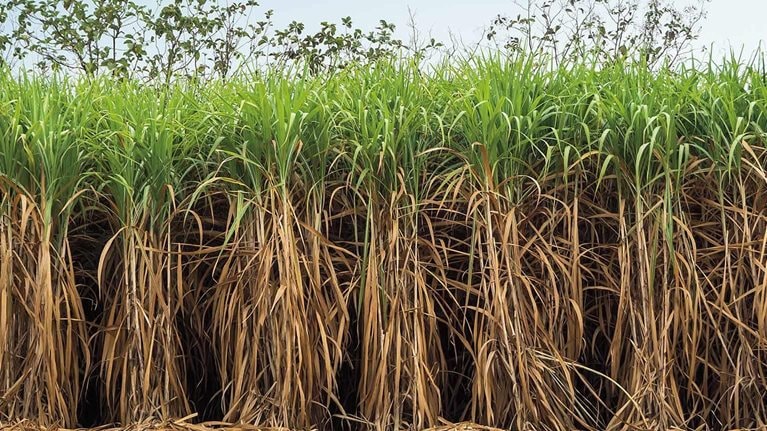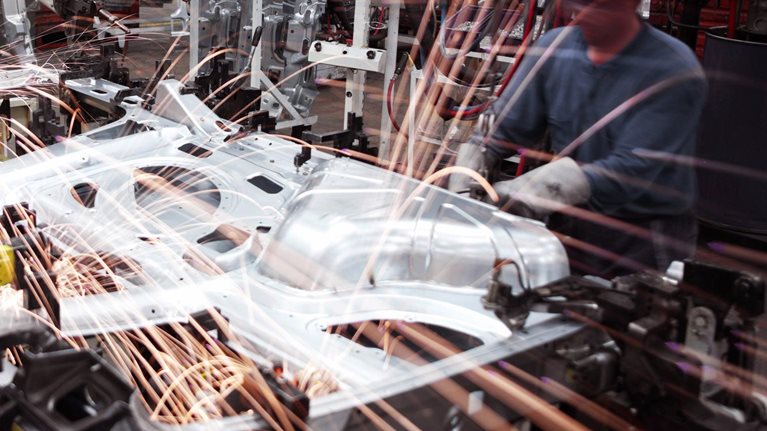Paper and forest products aren’t going away in the age of the smartphone and tablet, but the industry is shifting its focus to new use cases driven by digitization. In this episode of the McKinsey Podcast, Peter Berg, director of knowledge in McKinsey’s Paper & Forest Products Practice, and Oskar Lingqvist, senior partner and global leader of the practice, speak with McKinsey’s David Hunter about areas of growth in paper and forest products, including potential innovations in packaging and the overall value chain.
Podcast transcript
David Hunter: Hello, and welcome to this edition of the McKinsey Podcast. I’m David Hunter, an editor with McKinsey Publishing. In this episode, we’ll be talking about the changes under way in the paper and forest-products industry. With me is Oskar Lingqvist, a senior partner in McKinsey’s Stockholm office and leader of our Paper & Forest Products Practice. Welcome, Oskar.
Oskar Lingqvist: Thank you, David. Very happy to be here.
David Hunter: We also have Peter Berg, a senior expert in McKinsey’s Stockholm office, who coleads the Paper & Forest Products Practice. Peter, thanks for being here today.
Peter Berg: Thank you very much, David.
David Hunter: The paper and forest-products industry is one of those key industries that underpin our modern society and lifestyles and that we tend to take for granted. As all of us consumers of information know, there is a strong tide pulling readers away from printed newspapers toward digital. And it’s no surprise that this has been having a major impact on the paper industry. What may be less recognized is that lost demand in printed papers is being more than offset by demand from the growing global middle class for other wood-based products. These include tissue, packaging, and textiles, and there’s also new demand for new high-tech products based on wood.
And digital is giving as well as taking away. While demand for newsprint paper is being lost as readers move online, the ever-increasing migration by consumers to make purchases online is generating demand growth for transport packaging. These are just a couple of the strands of the major changes under way. Oskar and Peter, how has the big picture evolved over the past 15 years? Is paper demand in irreversible decline and going to disappear?
Peter Berg: David, thanks for the question. It is important to recognize, as you just did, that the paper and forest-products industry, as we think of it, is really a number of different industries with different characteristics and development tracks. Historically, many of them have been following a GDP growth pattern, more or less growing with GDP.
If you look at papers for reading and printing, that started to break off around the late ’80s, early ’90s, when the growth of the paper industry for printing and reading started to slow down in its growth, to the point—around 2006, 2007, 2008—where it actually started falling down drastically. What we’ve seen over the last couple of years globally is a decline in the demand for those kinds of papers.
At the same time, in other parts of the industry—you mentioned packaging, for example—we see a continuous GDP growth around the world. Tissue papers for sanitary products and so on have had similar developments.
Of course, you can also divide that into the different regions (exhibit). We have had tremendous growth, as in so many other products, in China and other parts of Asia, whereas the more mature markets in Europe and North America have stagnated or come down to lower levels of growth.

If you look at this going forward, where do we expect it to end up? We see very different growth paths and growth trajectories for the different segments of the paper and forest-products industry.
If you think of printing and writing papers, we see the decline probably continuing. It is quite unclear whether there will be a floor somewhere, where you reach an equilibrium, where we’re still using papers for reading and writing but at a lower level than we do today. Or will they disappear completely because people, particularly younger generations, have become so used to reading and writing and doing everything in terms of communications through electronic means?
David Hunter: Given these trends, what sort of initiatives are top of mind for executives in the industry today? What are the major challenges facing the paper and forest-products industry?
Oskar Lingqvist: Building on the vignette or background that Peter described, especially the situation where many paper and forest-products players are, in fact, present in several parts of the industry simultaneously, top of mind is facing this challenge of a very different growth outlook and industrial outlook.
While you see papers in decline or packaging or tissue growing, if you map that out, there’s going to be more scarcity or need for attractive fibers, especially those that we can breed in the northern parts of the globe.
That means, at the same time, being able to face overcapacity or challenges in some assets where the decline is more pronounced but, of course, also being able to go after the growth where it exists and, if possible, use your existing asset base, which, to some extent, can be reapplied between different parts of the industry and actually shift toward a much more stable or even attractive growth mix. That’s one very attractive and very important piece for our CEOs and executives.
We also see an increased focus on having access to the source of paper and forest products, which is the fiber. Essentially, while you see papers in decline or packaging or tissue growing, if you map that out, there’s actually going to be more scarcity or need for attractive fibers, especially those that we can breed in the northern parts of the globe. So getting access to the right raw materials is still very important.
If we want to mention one more theme, which is, of course, not unique to the pulp and paper or forest practice, it is the wave of various digitization initiatives that are happening. Why so? One, because any challenged industry will, of course, look to efficiency and effectiveness to drive out cost and increase performance. But also, which is maybe not so well understood, the paper and forest-products industry is one of those industries that’s very well set up—because of relatively advanced technologies, because of very continuous processes in manufacturing—to handle some of the new digital technologies that are available.
Peter Berg: If I may just add to some of Oskar’s points—the first one on shifting assets, and the fiber issue. The shifting of assets is incredibly interesting and important for many companies, for some of them to move away from those segments that are not developing very positively and shift to other segments, as they are relatively interchangeable in terms of what the machines can produce.
You think of a traffic jam. You have all the lanes going very slowly, and then suddenly, one lane is going a little bit faster, corresponding to a segment that grows a little bit faster in its demand. Then suddenly, everyone wants to jump in there, and that lane of traffic stands still as well.
There is a bit of a risk of the dynamics in the industry, when people move between different segments, that an issue that starts in one segment may propagate, and you have a ripple effect to other segments. So that’s one thing that is very important, as Oskar mentioned, for companies to handle in the next couple of years.
The second one on fiber supply and the importance of having access to cheap and good fiber, as Oskar mentioned, is almost a bit of a tug-of war-coming up between different kinds of fibers. We have a certain situation in recycled fiber. If you take the average, across the world and across all products, roughly half of the fiber raw material in a paper product is recycled somehow.
You have that, as opposed to virgin fiber, fresh fibers, of different kinds. In addition, you have new technologies and new product developments around what people call nanofibers that may add to this tug-of-war and how you use different kinds of fibers in different ways. That’s an incredibly exciting development that requires a bit of time to see how that’s going to evolve.
Would you like to learn more about our Paper & Forest Products Practice?
David Hunter: Can we talk more about the global growth of the industry? Across many, many industries, the growing wealth of consumers in different parts of Asia, and now we’re starting to see it happening in parts of Africa as well, seems to be leading to new momentum for growth in demand. Could you talk about how that is playing out for the paper and forest-products industry?
Oskar Lingqvist: Yes, but I think we need to look at that question at least divided into the main segments. If you, for instance, start with packaging, one of the largest and well known to all of us as consumers of these products, you are absolutely right, David, we are seeing an underlying shift in where the GDP sits in the world.
By and large, to Peter’s point earlier, these products have previously been very much driven by GDP growth. When you see, for instance, the combination that we have seen in China of, on one hand, a strong GDP, another one being a rapid increase of the middle class, and third and not least, the urbanization we’re seeing, you obviously see a multiplier effect on that demand and very attractive growth rates in those areas.
We are seeing similar patterns now happening in, for instance, Eastern Africa—mind you, from a very low base. And we are always expecting that we will see the same in India in the decades to come. If you take that as the underlying growth, you can then overlay that with some of the other growth drivers to also further accentuate, most noticeably, if we stay on packaging, topics such as e-commerce and other trends related to that. E-commerce is obviously one trend that is quickly changing the retail industry and currently estimated to probably grow three, four times that of the overall retail industry.
Similarly, if we stick to retail as the example, there are other shifts, like the fact that we will have much more what we call retail-ready packaging, meaning that we actually have packaging materials being used in the store both for transport and marketing and ease of use and so forth, which are also changing very quickly and provide other opportunities.
China has become the world’s largest consumer of paper and board, but it has a growing need to also have a footprint in the global markets to export.
Peter Berg: David, your question was on growth, which is absolutely relevant. What we should also remember is that one of the challenges that this industry has had and continues to have is the balance between supply and demand. So it’s not only where does it grow the most but also which companies and which parts of the world add capacity? We will see that balance develop over the years. What we have seen, for example, in China, up to about 1995, is that it didn’t have any real modern production capacity of paper or board for packaging purposes. Since then, it has grown to become the world’s largest producer of paper and board. It has also become the world’s largest consumer of paper and board, but it has a growing need to also have a footprint in the global markets to export out of China. So from the perspective of the companies within the industries, the balance between the supply and demand becomes even more important than only the demand.
Then just to add one point to Oskar’s points around growth in the regions, and particularly China, it’s interesting to see how the expectations of Chinese demand growth has changed over the years. If you talk to a number of different industry observers, the expectations on 2020 demand for paper and board in China was very, very high up to about 2011. From then on, it has actually leveled off and decreased and matured, so that the expectation for demand from China is now significantly lower than it was only five years back. And the expectations on the percentage growth have also been moderated quite a bit. That’s also something we’ll see where it plays out in the future.
David Hunter: I’m going to switch direction slightly. You’ve mentioned that there’s a need for new virgin fiber. Where is the industry looking in the world to develop that resource?
Peter Berg: That’s a very good question, and it’s a critical question for many pulp and paper companies. If you look historically, what we’ve seen over the last decades is that—or go even further back, if you wish—most of the paper production in the world was in the Northern Hemisphere, close to the forests of the Northern United States, Canada, the Scandinavian countries, where you have a lot of spruce and pine trees, out of which you made sawmill products, assorted wood products, as well as paper.
Over time it shifted also to the Southern Hemisphere—for example, to South America, to Brazil—where it’s easier to quickly grow trees, and in this case, it’s acacia and eucalyptus trees that have a tendency of growing faster than the spruce and pine trees of the Northern Hemisphere. There’s been, over the last decades, a significant movement for some kinds of fibers, the kinds of fibers that come from leaf-bearing trees down in the Southern Hemisphere. This is often in the form of plantations, so huge plantations on flatlands in, say, Brazil or in more hilly lands of, say, Chile. Going forward, the industry needs to look both for more such opportunities but also, to one of Oskar’s earlier points, for fibers of more strength, of longer fibers, from the kinds of trees and forests that you have up in the Northern Hemisphere.
So there is a need to more efficiently, in an environmentally correct way, use the forests of the Northern Hemisphere. This may be in Russia, for example, which has an enormous stock of these kinds of forests throughout its area. It could be in North America or the northern parts of Europe.
The most holy-grail topic has always been can we reduce the aluminum that we use in our drinking packages?
Oskar Lingqvist: When we look at that equation that Peter just described, you could take one of two stands, or maybe a combination thereof. One is to say, well, if we project out and we look at what will happen in terms of needs per segment, and what might happen even to topics we haven’t discussed, which is the quality of the fiber we recycle in our day-to-day products, one would say we could be looking at a quite big or substantial scarcity of the type of fiber that we know in the Northern Hemisphere, essentially what we call soft wood.
You could take a slightly different stand and say, well, it’s in those types of situations that technology comes to the forefront, and we see development, and we might see new mixed species or developed species increasingly also coming through what we call hardwood, so basically what comes from the plantations and mainly through eucalyptus. Who knows exactly where on that scale we will end up, but, again, having access to the right fiber and, if you’re in the industry, making the right bets on fiber become increasingly important.

Pulp, paper, and packaging in the next decade: Transformational change
David Hunter: You’ve mentioned that there’s some very forward-looking innovation work going on in the industry. Can you give some examples of the innovative products that are starting to come out from pulp and wood companies?
Peter Berg: Carbon fibers, for example, are very much in a research stage currently—how to develop these carbon fibers from the lignin component of wood to make them strong enough to be useful in, say, the hulls of boats or for cars or for aerospace applications and to make them cheap enough to be able to compete with fossil-based carbon fibers.
The viscose textile, which you often have in the inner linings of suits and for shirts and blouses, is originally a wood fiber–based textile. It’s an old technology. What has happened over the last couple of years is that there’s been almost an explosion of both the demand for those kinds of textiles and therefore also the production of the wood forest products that leads to those textiles. Much of that demand comes from Asia. But it also comes from a higher sustainability awareness in North America and Europe, for example.
Oskar Lingqvist: There is another theme, which is the innovation that’s taking place closer to the customer or closer to the different business models that this industry provides. What do we mean by that? We are seeing—again, if we go back to the packaging space—increasing innovation around how to use paper in combination with other materials to get closer to applications we didn’t used to play in before.
Fresh meat, fresh foods, is one example. There are innovations around can we actually replace the nonrecyclable materials in packaging? The most holy-grail topic has always been can we reduce the aluminum that we use in our drinking packages, especially those that are carbonated, and therefore be able to have a much more environmentally friendly package?
Other innovations are much more linked to the whole value chain. If you search for packaging these days, you will not have to search far to get into topics such as smart packaging, intelligent packaging, which often has to do with how do I best trace a product? How can I use the package itself to communicate with my customer? How can I use the package to prevent counterfeit, stealth, other problems that might occur, especially in long and relatively nontransparent value chains?
David Hunter: Thanks very much, Oskar Lingqvist and Peter Berg. This has been a fascinating discussion.
Oskar Lingqvist: Thank you, David. Likewise from us. Very fascinating conversation.
Peter Berg: David, thank you very much for having us. It’s been a pleasure.
David Hunter: And thanks to our listeners for tuning in. To learn more about McKinsey’s research on this and other topics, please visit McKinsey.com.


